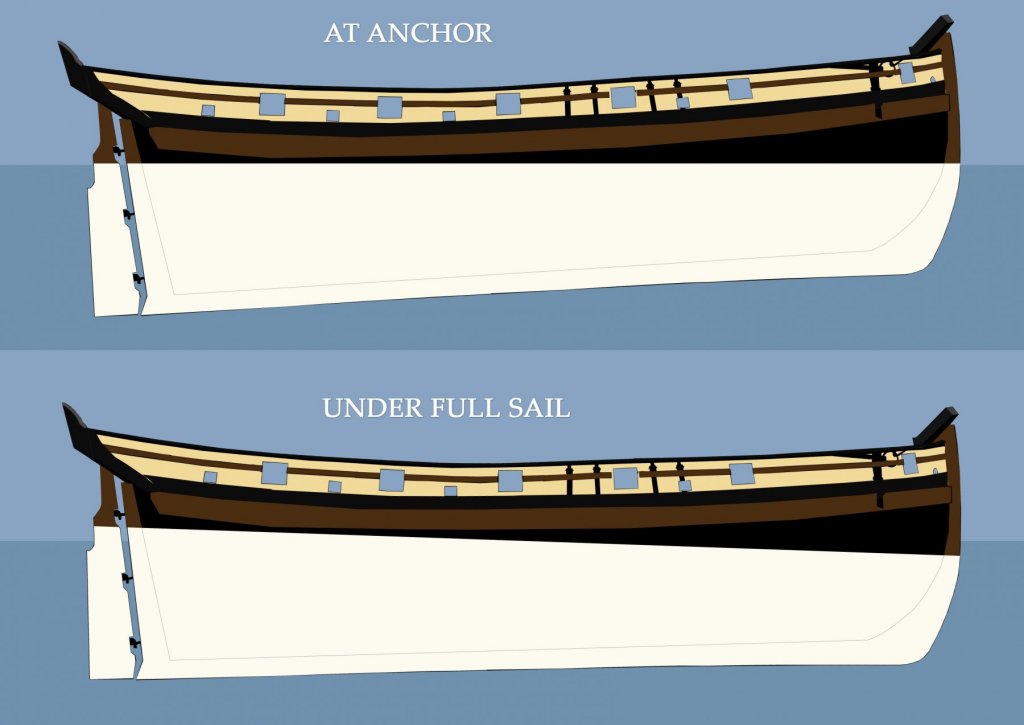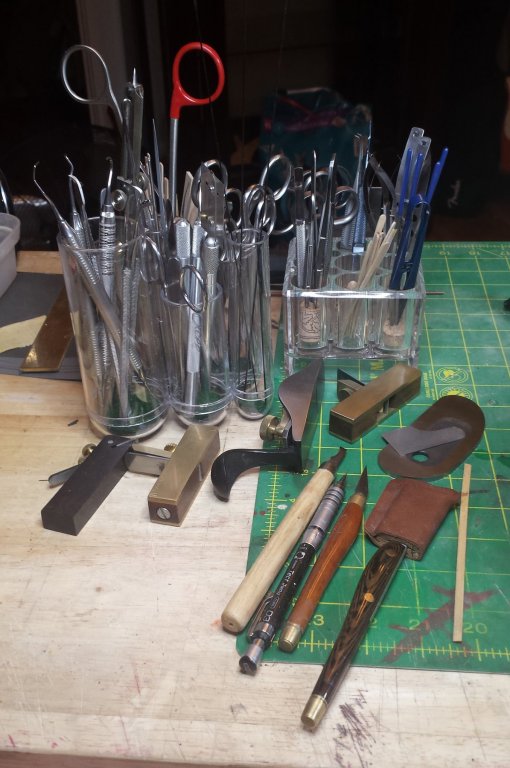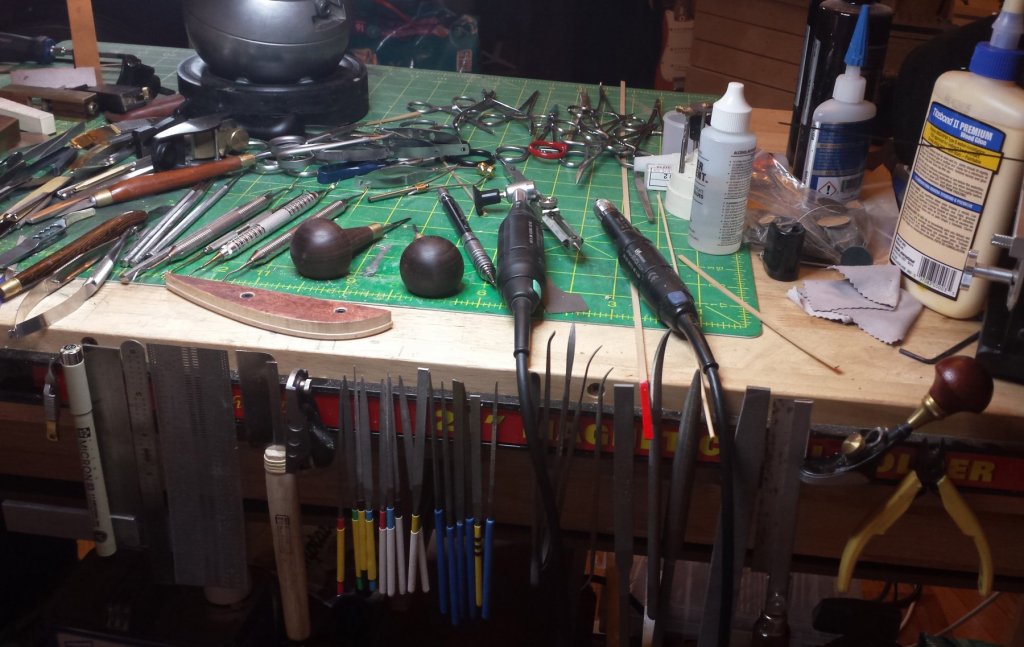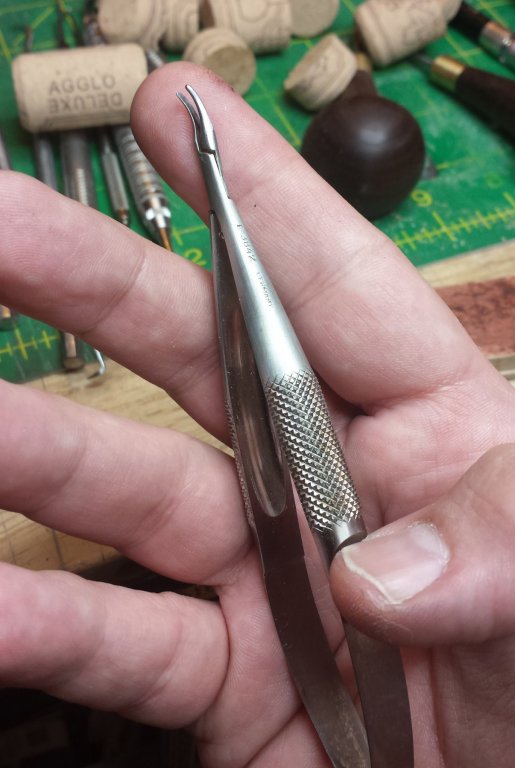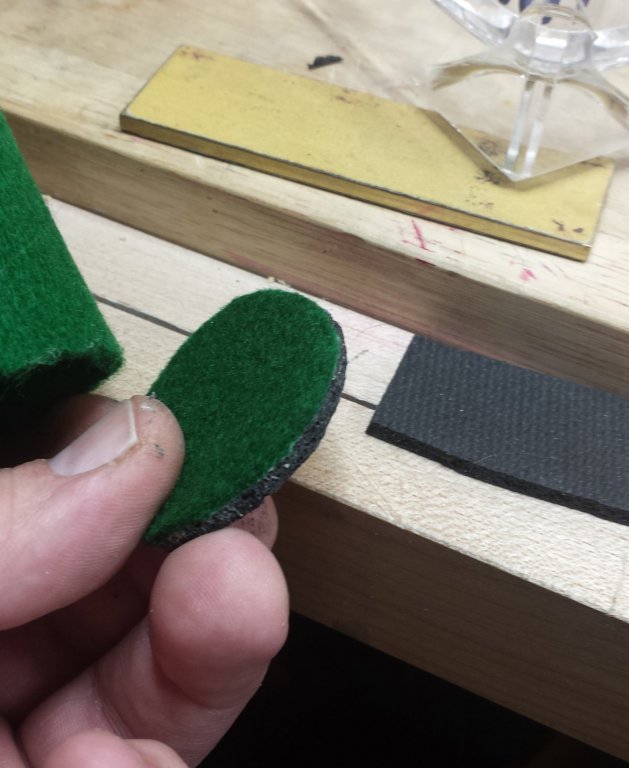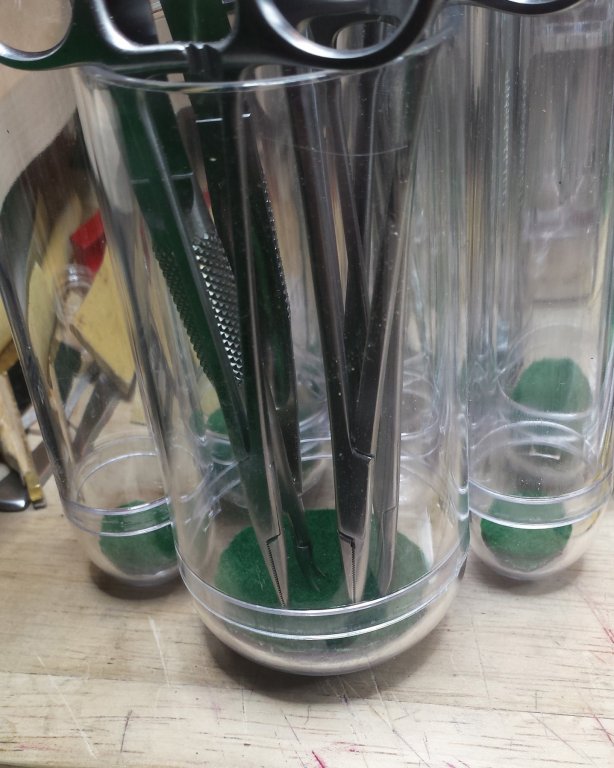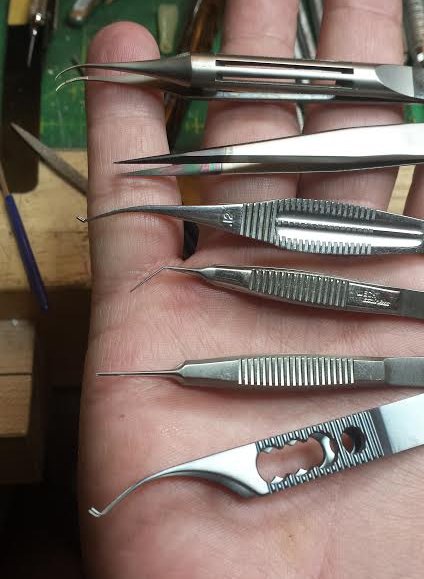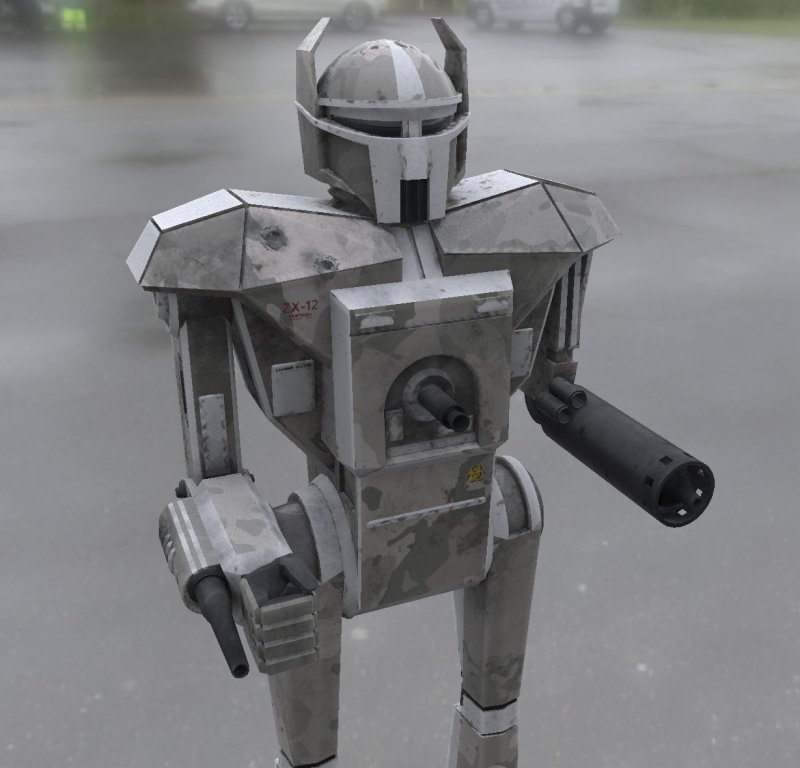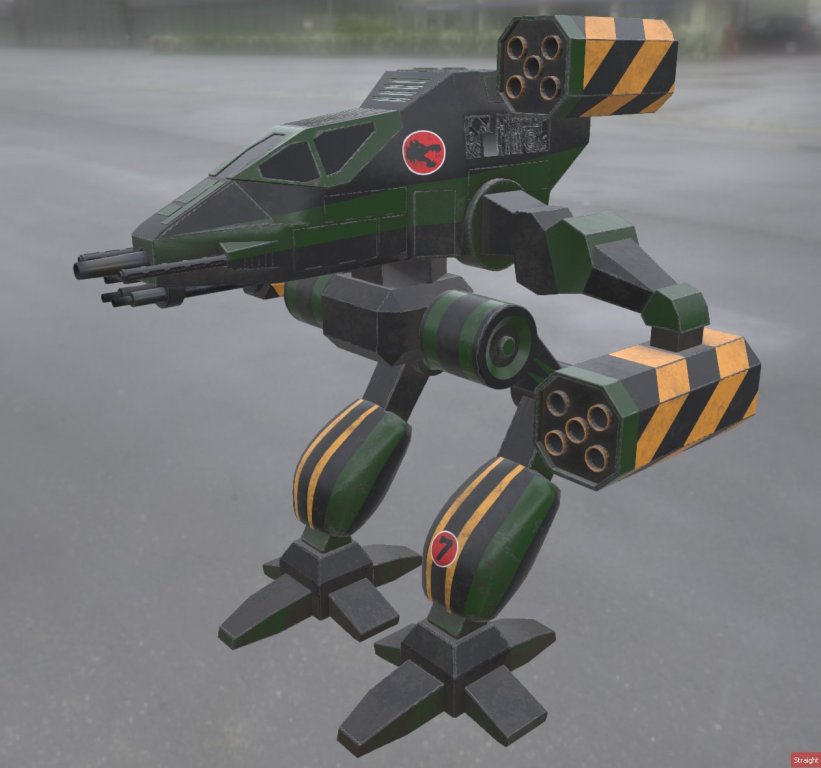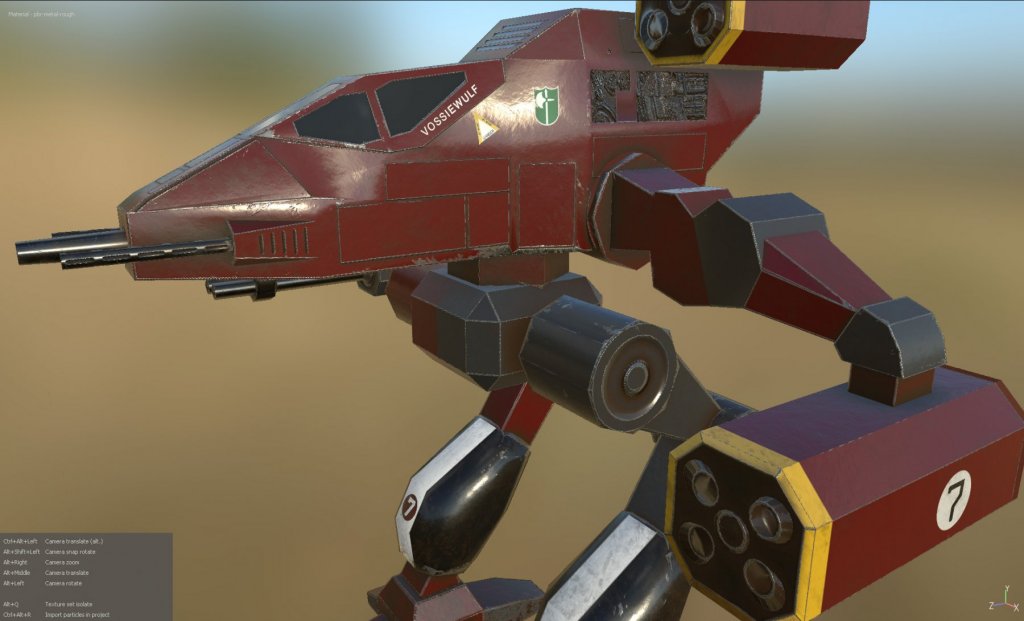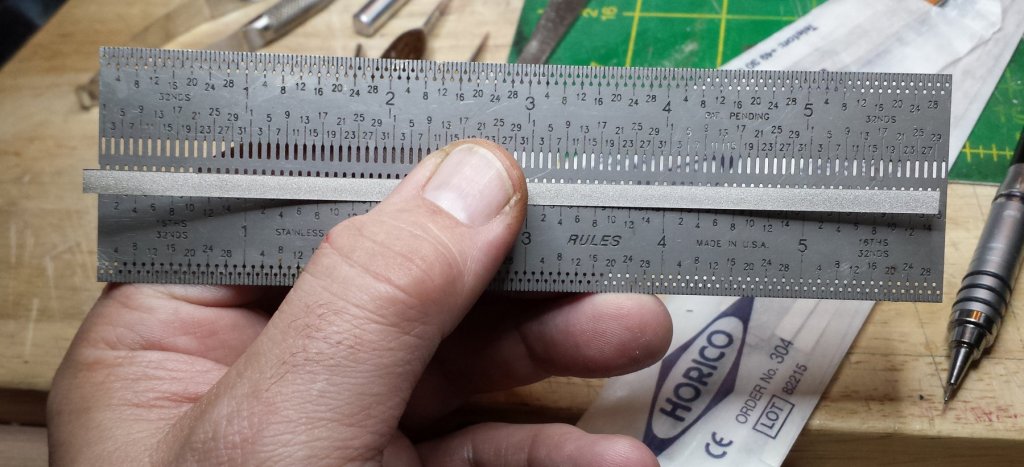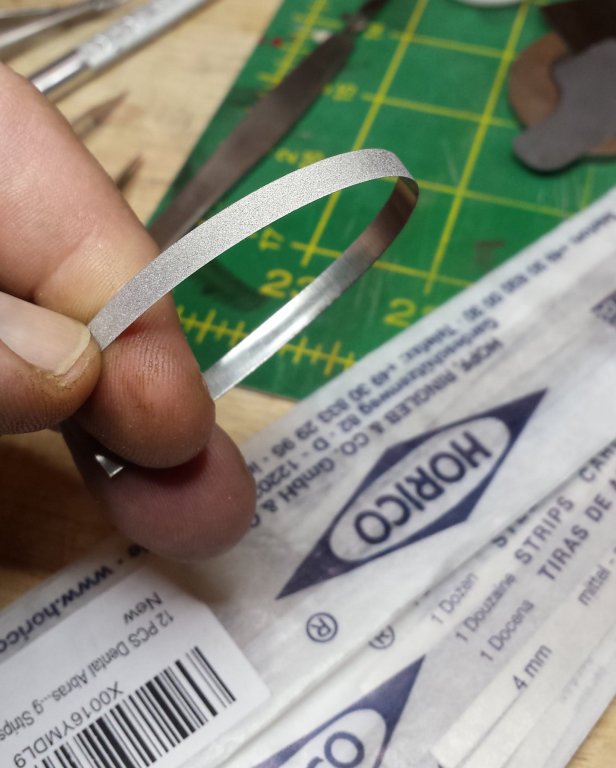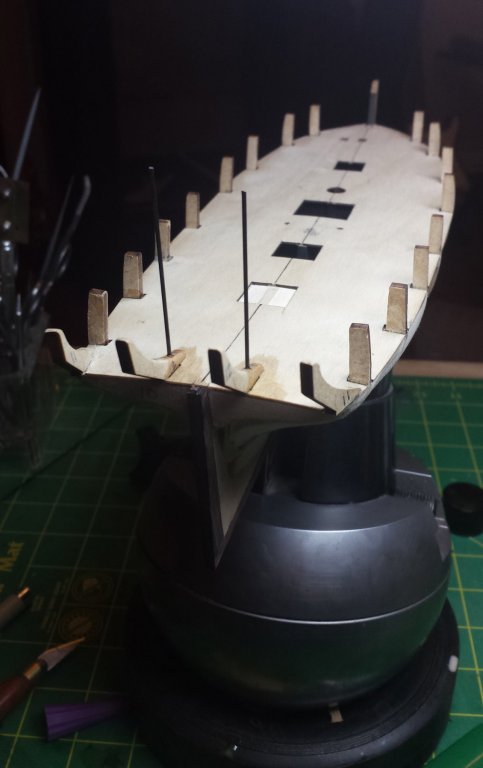-
Posts
1,477 -
Joined
-
Last visited
Content Type
Profiles
Forums
Gallery
Events
Everything posted by vossiewulf
-
Blah the second one doesn't sound good, that would require careful timing in combat and that's not a good idea, besides the fact you'd have to fire a 6lb mass at about mach 34 to generate enough force to really bring the bow down. Your first idea though, is much much better and I think that's the winner. We're forgetting these ships were so over-canvassed that they likely would be pushed significantly bow-down under full sail, there just wasn't enough bow length forward of the mast to stop that from happening. In fact more I think about it, I'm sure that's the reason for the bizarre at-rest waterline, and that would be a very important point of note for anyone wanting to do a waterline model under sail. Edit - here we go, it all makes sense now Here's a guess at how she would trim under full sail, gunports now align reasonably well with the water. Well not all makes sense, as I still don't understand why the gunport heights follow the top of the rail and not the deck, but that's minor compared to the overall trim alignment.
- 714 replies
-
- lady nelson
- victory models
-
(and 1 more)
Tagged with:
-
Yep, looking at the Requien plans there, if anything her bow is higher. They must have done that with ballasting as the mid and rear hull are much fuller than the bows, so unballasted I'd think these boats would tend toward down at the nose. If that's the case, then the trim is probably pretty squirrelly in terms of getting it and keeping it right. But I'm still confused a bit. So ok, bow higher is probably a good idea in a small boat toodling around the North Sea. But even so, you'd think they could have done a better job of aligning with gunports with, well, anything. On my boat the gunports will not follow either the deck or the waterline, but they will follow the top line of the gunwales, which is by far the least important of the three.
- 714 replies
-
- lady nelson
- victory models
-
(and 1 more)
Tagged with:
-
Thanks Tony! Man modeling in the intertubes age is a tad easier than it used to be. We ask, a few hours later I not only have an explanation but step by step photo instructions
- 714 replies
-
- lady nelson
- victory models
-
(and 1 more)
Tagged with:
-
Ok now that has me imagining a fleet of cutters in a following sea, little blowhole fountains scattered across the horizon, occasionally including a steersman flying head over heels. But I see what you mean, hard to see how that wouldn't happen with waves of the right height. I'm going to go look at Tony's photos again. Another thing is that although my drawing upthread of the color scheme is using the waterline that I see marked, it looks a bit off to me now, with the bow too high. Are we sure I have the right line?
- 714 replies
-
- lady nelson
- victory models
-
(and 1 more)
Tagged with:
-
It's the inverse question that every builder has faced from admirals at some point - theirs being does this X make my transom too big? I actually built mine back up a bit at one point, it was something I worried about when sanding the hull but I ended up with a smaller transom than I wanted. You can do the same, it's just a pain to do, but I'd go with what Tony recommends. I'm getting closer to starting my treenailing, and I'm still not sure what woods I'm going to use. What you have looks pretty much perfect in terms of darkness differential, I think I'm going to use it as a starting point for my experimentation. I was thinking about using dowels in the ballpark and taper them, but now that seems like asking for inconsistent sizes. I have the Byrnes drawplate so starting point is 22 and .5mm. And I'm going to work from your frame spacing. Basically I'm going to steal everything you're doing
-
What Rick says is absolutely right - none of these super special tools are required, they just make certain things easier and instead of jack of all trade tools you have ones more specialized for certain situations. I made do just fine for a very long time with just a couple knives and razor saws and sandpaper. And downside of fancy tools is that if you don't get good results, you look like a complete doofus
- 714 replies
-
- lady nelson
- victory models
-
(and 1 more)
Tagged with:
-
EDIT - wow, wrote this six hours ago and then navigated away without actually, you know, submitting. One time I'm very glad about that autosave feature. I had wondered about that too, since all the kits I've seen have a big open hole there, and iirc I think I saw one of period models that Tony took pics of had an open hole also. At that point I decided that despite appearances not much water must have been shipped that way. And I am still making slow progress, managing about one strake on one side an evening as time is still somewhat limited. And it would be nice if I stopped buying new tools every five minutes as it seems like every evening I have something new to unpack and find a place for. The new acquisitions finally overwhelmed my tool holders completely and I had to get new ones and that led to two evenings of reorganization. All the workbench area tools laid out for reorganization. It's just slightly possible that I have a teensy tool-collecting problem. One of the holders is connected clear tubes and considering the expense of many of these tools I took the time to use contact cement to glue pieces of rubber padding and green felt together to go in the bottom of said tubes to protect the tips of everything. Just a little bit better now. The one on the right has sawed-off wine corks (unused :)) and I used my rotary tool to cut custom holder grooves/holes for each tool. Very important as this is where all those super fine forceps are and those tips need to be very protected. Speaking of which, after a couple months of shopping on EBay for good deals this is the set I ended up with. I'm extremely happy with these, they work so much better than other tweezers I've owned that I want to do a 1/600 ship just to give me an opportunity to use them to their potential. The ones on the bottom are .5mm both side and top view down at the tips, and just last night I used them to easily pick up and hold a piece of brass that was 1/8" x 1" x 3". You really don't have to worry about dropping stuff with these. However if the folks reading were going to buy only one surgical tool, it would be these - a Storz Barraquer needle holder. Just for god's sake don't try to save money buy buying a no-name $10 version, these are hardened duralumin and are beautifully made. Since I got them they haven't left my bench top and they've become my go-to tool for grabbing stuff, and you best be ready to take me on with fully sharpened carving knives in each hand if you want to take it away New these are probably $100, I got mine for $50.
- 714 replies
-
- lady nelson
- victory models
-
(and 1 more)
Tagged with:
-

Fokker Dr.I by Torbogdan - FINISHED - Model Airways
vossiewulf replied to Torbogdan's topic in Non-ship/categorised builds
That's why I turned my own, one of the biggest nightmares in modeling is trying to make a rotary or radial engine that's cast in two parts presentable. One option is 3d printing at Shapeways, and here are some models you could use. If you don't know 3D work I would ask someone that you know whether they could help, to get them successfully printed you'd need to scale it to the correct size and also move some parts around for proper printing, and once received you'd assemble it like a small kit. -

MONTAÑES by Amalio
vossiewulf replied to Amalio's topic in - Build logs for subjects built 1751 - 1800
-

Yet Another Pandora 3D build
vossiewulf replied to herask's topic in CAD and 3D Modelling/Drafting Plans with Software
BTW, one thing you could do with your model is make one hell of a plastic ship model available on Shapeways. Would take time to lay out all the parts for printing. But someone's going to do it, and make some money.- 119 replies
-
Joel, aren't those values again either guidelines or minimums? Just take a look at all the British 74s, go to ThreeDecks' search page and tell it to bring up all Great Britain ships that are Third Rate and 74 nominal guns then look at the ships and their gundeck lengths. All of them have 14 ports a side. I can't remember where but I remember reading a designer saying he was pleased he'd gotten an extra two inches between ports, that it doesn't sound like much but made a measurable difference in ease of working the guns.
-

Yet Another Pandora 3D build
vossiewulf replied to herask's topic in CAD and 3D Modelling/Drafting Plans with Software
Ditto. These are Battletech mechs from a game project I was working on last year. First two are high poly but bottom one is low poly + normal map (and AO and curvature and ID etc.) and not the final version, you can see where I forgot to taper the missile launcher tubes so Substance Painter's normal map baker got confused.- 119 replies
-

Yet Another Pandora 3D build
vossiewulf replied to herask's topic in CAD and 3D Modelling/Drafting Plans with Software
Ok, just checking that you're thinking it through and you are, so you'll be fine. Not sure if they have a close integration now with Blender, but substance painter does have an excellent material export for Max with substance material types being native in Max now.- 119 replies
-
The gunport spacing has to be a general rule. Since frigate and ship designs of the same number of guns had gundeck lengths that varied by a foot or two from each other during any given time period, it can't be a hard rule as those differences are not going to be divisible by the size of the shot and the number of gunport spacings.
-

Yet Another Pandora 3D build
vossiewulf replied to herask's topic in CAD and 3D Modelling/Drafting Plans with Software
The thing that surprised me is making treenails actual objects. I hope your machine has lots of memory For the sake of rendering times you might want to think about the parts you can do with normal maps and your textures instead of building memory-intensive geometry. I know lots of people who use Blender and do very good work with it. I am MAX but that's because I have been using it since it was 3DSr4 for DOS in 1994, no way going to learn wildly different workflows at this point. At one point I had a free licensed copy of Lightwave 7 or something, but I gave up after a week, what a completely messed up program that was. The preferred modeling method was typing numbers everywhere. I assume you are texturing right, not going to keep just the generic wood textures? If so, what are you going to do to unwrap UVWs? There are only a couple tools I know of that can reasonably handle something this complex, otherwise you'll need to break it into lots of separate objects. I use Flatiron for complex UVW unwrapping, but it's a bit expensive and not sure if it supports Blender. If you can, and haven't already, look at the Substance Designer/Painter combo, there isn't much you can't do and it's quite easy to do amazingly cool things. One of them is like $150, the combo was $250 last time I looked and you could get it on Steam. Regardless, it looks good already and you're thinking about the right things, so I'm sure it's going to be a very nice and accurate model.- 119 replies
-

More tools - Luthier, jeweler, fly-tying
vossiewulf replied to vossiewulf's topic in Modeling tools and Workshop Equipment
Give me a couple days to play with them, I just had a few minutes to experiment with them this evening and I may rate the medium more like 220. But regardless I think these are going to be really handy for making various sanding/filing tools, I'm going to mount them on some brass pieces and also some spring steel pieces but you could use wood in most cases. Also, this brand is definitely diamond But a bit more expensive at $12 for 5 pieces. But still used on wood they should last almost forever so I think either the Horico ones or these are going to be good purchases. -
Easy guys I didn't say anything about slavish attempt to find the perfect furniture, just that whatever I end up doing is still an open question Once I get there I'm going to review the LN kit vs. various cutter models, I think it was Tony who provided a link upthread to a large collection of cutter models, some period. I have been toying with the idea though of giving this a real name of a cutter of the right size and time period, I don't much like the idea of a made-up name. Haven't decided yet. Passer, if you haven't found it already the best build log you should be following even though the design is somewhat larger and a bit different than our cutters, is Chuck's Cutter Cheerful. He's doing the rigging now and also the full step-by-step instructions are available on his Syren Models site. Also, as Rick pointed out to me some time ago, the first chapter of Rigging Period Fore and Aft Craft could be relabeled "The Advanced Rigging Manual For Lady Nelson and Sherbourne". It covers a cutter basically identical to ours.
- 714 replies
-
- lady nelson
- victory models
-
(and 1 more)
Tagged with:
-

More tools - Luthier, jeweler, fly-tying
vossiewulf replied to vossiewulf's topic in Modeling tools and Workshop Equipment
Good point, hadn't thought of that use. As I mentioned, not really sure, but I would start with the fine grit. The medium that I tried last night was maybe 100 grit(?) and I assume the coarse is going to be more for reshaping than sanding. -

More tools - Luthier, jeweler, fly-tying
vossiewulf replied to vossiewulf's topic in Modeling tools and Workshop Equipment
$19.45 delivered for 12 diamond-coated stainless steel strips, and they seem to be made well and should last quite a long time. I'm disappointed they're only on .007" steel, I was hoping for a bit stiffer. But if nothing else you can make lots of really useful semi-files out of these and that's what I intend to do. I might pick up some of the wider 6mm strips also. BTW all manufacturers seem to sell coarse/med/fine grit but no indication of how that maps to normal diamond sharpening stones and the like. -
The "antler" carving looks like standard acanthus patterns.
- 2,696 replies
-
- heller
- soleil royal
-
(and 9 more)
Tagged with:
-
As long as you accept that anything bad that happens in your absence is your fault, I'm good I've figured furniture is still a totally open question, we've seen a whole series of models, none of which has the same furniture as the others.
- 714 replies
-
- lady nelson
- victory models
-
(and 1 more)
Tagged with:
-
Yes, and I've been lucky in that Rick has been doing most of the research for me But I just see now that he has a new build going, something I'd missed. I'm glad that he's working on something but I'll have to assume I need to do more digging myself. If you see upstream we were discussing at length the gunport locations and orientation, since they follow the line of the top of the gunwale rather than the deck line, which still seems weird to me. Thanks Dan. I think the one book I don't have is that one, so I'll grab it. I wish I'd known about the flaring before I started the second planking, that would have made things much easier. As it is unfortunately I'm committed now and will have to go with my stealer plan. They're going to be where the surface flares out for the transom and therefore will be mostly edge-on from normal viewing angles so hopefully not a real issue. After putting on the garboard the first thing I did was taper the topline to reduce how far it comes up the stem on both sides. And I found a new issue that I'd need to account for, that the bow end of the port rabbet bottom line drifts upward a bit less than 1/32" before beginning the upward sweep. Not sure how that happened yet but experience with the first planking told me to fully compare each plank as it's put on each side to within an inch of their lives to catch those kind of things so I saw immediately that the top line of the garboard plank on the port side was considerably higher than the starboard one. I carefully trimmed the port one back most of the way with the first plank and the rest of the way with the second, spreading the error out a bit. As of the second plank they've been dead even port and starboard so hopefully all is well, and I'm going to be more careful cutting rabbets next time.
- 714 replies
-
- lady nelson
- victory models
-
(and 1 more)
Tagged with:
About us
Modelshipworld - Advancing Ship Modeling through Research
SSL Secured
Your security is important for us so this Website is SSL-Secured
NRG Mailing Address
Nautical Research Guild
237 South Lincoln Street
Westmont IL, 60559-1917
Model Ship World ® and the MSW logo are Registered Trademarks, and belong to the Nautical Research Guild (United States Patent and Trademark Office: No. 6,929,264 & No. 6,929,274, registered Dec. 20, 2022)
Helpful Links
About the NRG
If you enjoy building ship models that are historically accurate as well as beautiful, then The Nautical Research Guild (NRG) is just right for you.
The Guild is a non-profit educational organization whose mission is to “Advance Ship Modeling Through Research”. We provide support to our members in their efforts to raise the quality of their model ships.
The Nautical Research Guild has published our world-renowned quarterly magazine, The Nautical Research Journal, since 1955. The pages of the Journal are full of articles by accomplished ship modelers who show you how they create those exquisite details on their models, and by maritime historians who show you the correct details to build. The Journal is available in both print and digital editions. Go to the NRG web site (www.thenrg.org) to download a complimentary digital copy of the Journal. The NRG also publishes plan sets, books and compilations of back issues of the Journal and the former Ships in Scale and Model Ship Builder magazines.


